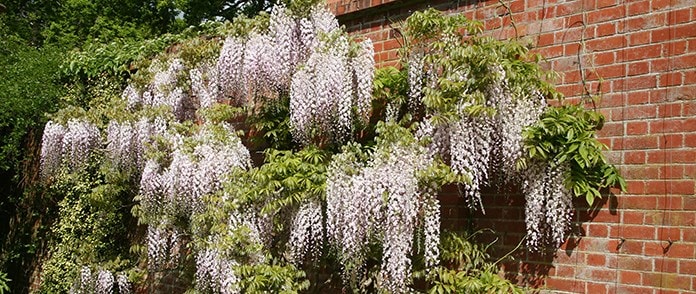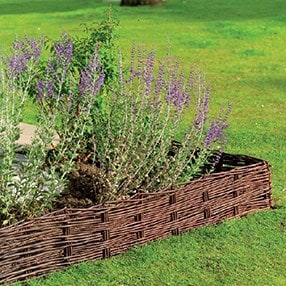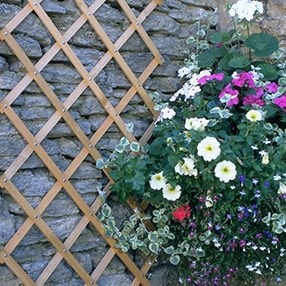An ugly feature can ruin an otherwise attractive garden design. Follow these practical design solutions to make the eyesores blighting your garden disappear

Most gardens have at least one less-than-attractive feature that detracts from the overall enjoyment of a garden. It might be the utility area for dustbins or a compost heap, the productive yet unattractive vegetable plot, or an immovable structural feature like a manhole cover in a lawn. On the other hand, the offending feature might dominate the garden from outside, such as a nearby building or electricity pylon. Fortunately, all these problems can be overcome with a little planning and forethought.
Design solutions

Sheds and compost heaps If you want to cover up a utility area containing a shed or compost heap at the bottom of the garden, it’s tempting to block the view with a solid fence set at right-angles across the plot. Although only the top of the shed is in view, the new fence panel will be as imposing as the shed that it obscures, and will make the garden seem a lot smaller. Far better to install an angled veil of climber-clad trellis, leading the eye into one corner of the garden - effectively camouflaging the utility area, while focusing attention on a prominent decorative feature at the furthest point. The garden will not only seem larger, but the peekaboo trellis will make it seem light and airy too - offering intriguing glimpses of the garden beyond. I have used trellis panels and a statue to help disguise an eyesore of a working area filled with old pots, piles of compost and other recycled materials.

Small eyesores Small immovable eyesores, such as manhole covers and old tree stumps, can be very distracting – particularly in a small garden. ‘Gardener’s law’ states that unsightly manhole covers are always positioned in the most inconvenient places. A common mistake when trying to hide a manhole, is simply to edge it with a few spreading evergreens, such as prostrate conifers or cotoneaster. Unfortunately, unless planned as part of a wider scheme, this just highlights the fact that the manhole is lurking underneath. Instead, try to incorporate these screening plants into the edge of a border or plant a mixture of upright and spreading plants to lift the gaze of the onlooker. Better still, add a second matching bed to balance the effect and draw the eye to the mid-point between them – well away from the position of the manhole. Stumps are much more satisfying to deal with, since they can be turned into an attractive feature by careful planting. This could take the form of a scrambler, such as a climbing rose, honeysuckle or clematis, planted a little away from the stump and trained to look like it is growing out of it. By adding a small-leaved ivy or two for winter interest, the eyesore will be transformed into a colourful centerpiece.
Fragrant border beside a patio
Distant eyesores Large blights on the landscape can be more difficult to hide, especially in a small garden. Rather than trying to screen it from view with very tall structure, trees or hedge at the end of the garden, think about using perspective to your advantage. By planting a tree or putting up a structure part-way down the garden, the screen can be smaller to achieve the same effect. Position it to block the line of sight from the most used viewing points, such as the patio or kitchen window, and the eyesore will practically go unnoticed. Again, aim to camouflage rather than blot-out the eyesore, so that the new screen isn’t too dominant on the rest of the garden.
